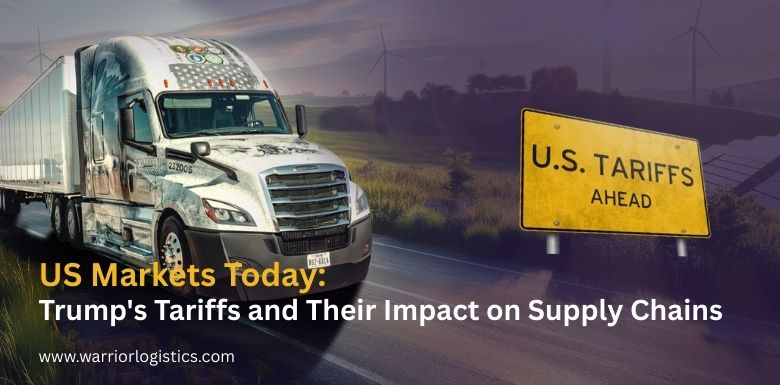US Markets Today: Trump’s Tariffs and Their Impact on Supply Chains
As of April 18, 2025, the U.S. economy is experiencing significant shifts due to the reimplementation of tariffs under former President Donald Trump’s administration. These tariffs, aimed at bolstering domestic industries, have far-reaching implications for global supply chains and the broader economic landscape.
The Return of Trump’s Tariffs
In a move reminiscent of his first term, President Trump has reinstated substantial tariffs on Chinese imports, with rates reaching up to 145% on certain goods. These measures target a wide array of products, including electronics, automotive parts, and critical minerals, aiming to reduce dependency on foreign manufacturing and encourage domestic production.
Additionally, new tariffs have been imposed on Chinese-built and owned vessels docking in U.S. ports, intensifying trade tensions and potentially disrupting global shipping routes.
Impact on Supply Chains
The reintroduction of tariffs has led to immediate challenges within global supply chains. Companies reliant on Chinese manufacturing are facing increased costs and logistical hurdles. For instance, the U.S. rare earth industry, crucial for electronics and defense, is grappling with supply constraints due to China’s export restrictions, a retaliatory measure against U.S. tariffs.
Moreover, the electronics sector is experiencing price hikes and potential shortages. Products like smartphones, laptops, and household appliances, predominantly manufactured in China, are now more expensive, affecting both consumers and businesses.
Are Tariffs Good or Bad for the Supply Chain?
Tariffs significantly impact supply chains, often leading to higher operational costs, increased complexity, and potential disruptions in trade flows.
For the freight industry specifically, tariffs can reduce shipping volumes due to higher import/export costs, leading to decreased demand and lower profits.
While tariffs aim to protect domestic producers, they may prompt inefficiencies by forcing companies to source materials from less optimal suppliers.
Ultimately, tariffs create uncertainty within supply chains, compelling freight forwarders and logistics providers to adapt quickly to changing trade dynamics, potentially compromising efficiency, reliability, and profitability across the industry.
Final Thoughts
As the U.S. navigates the complexities of international trade under renewed tariff policies, businesses and consumers alike must adapt to the evolving economic landscape. While the intention behind these tariffs is to strengthen domestic industries, the broader implications on global supply chains and market dynamics remain a subject of critical analysis and debate.
How Warrior Logistics Can Help with Tariffs
Navigating tariff-related challenges requires expert logistics support, and Warrior Logistics is uniquely positioned to assist. By offering comprehensive transportation and supply chain solutions—including flatbed trucking and dry van freight services—we help businesses optimize their logistics strategies to mitigate tariff impacts.
Our experienced team analyzes shipping routes, sources cost-effective alternatives, and streamlines operations, minimizing tariff-related disruptions.
Committed to reliability, efficiency, and tailored solutions, Warrior Logistics ensures your freight moves smoothly despite complex tariff environments, protecting your bottom line and keeping your supply chain resilient and competitive in the face of ongoing trade uncertainties.



